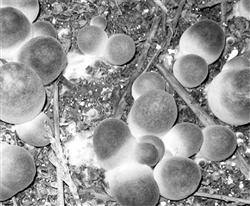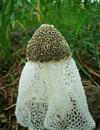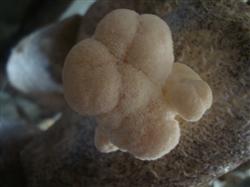What's the point of growing straw mushrooms in summer?

What's the point of growing straw mushrooms in summer? Straw mushroom is a kind of edible mushroom cultivated in high temperature season, and it is the fastest harvest of all edible mushrooms. It takes only 10-14 days from sowing to harvesting. The technology is easy to master, low cost and fast, so it is very suitable for greenhouse cultivation in summer. What should we pay attention to when cultivating high-stable mushrooms in summer? How to operate in order to create high efficiency? First, the preparatory work should be done. Volvariella volvacea is a kind of high temperature mushroom, which is suitable for cultivation in summer. As the cultivation method of straw mushroom in the early stage is relatively simple, many mushroom farmers focus on the period after straw mushroom enters the shed. But the reporter does not think so, recommend mushrooms, the preparatory work is also very important, once the preparatory work is not done, the entire growth period of straw mushrooms will be greatly affected. First of all, disinfect the mushroom shed. First clean up the dead branches and leaves in the shed, clear out the shed, spray and disinfect the whole shed with 5% lime water or dark white powder, strictly release the tuyere of the sealed mushroom shed, disinfect it with formaldehyde or potassium permanganate, seal for seven days, and let out the air. For the poorly sealed mushroom shed, spray and disinfect the floor walls of the whole shed with 5% formaldehyde, and then enter the shed a week later. Second, prepare the base material. There are many culture materials suitable for the growth of volvariella volvacea, such as cottonseed shell, waste cotton, wheat straw and rice straw. Among them, waste cotton is the best, cottonseed shell is the second, wheat straw and rice straw are slightly worse. In recent years, the price of waste cotton and cottonseed shell has soared, which has greatly increased the production cost of edible mushroom. Vegetable farmers can choose raw materials with rich resources and low prices, such as wheat straw according to local conditions. Here, taking wheat straw as an example, the treatment of raw materials is introduced: wheat straw harvested in the same year, undrenched and unspoiled should be selected. Spread the whole bundle of wheat straw on the ground and roll it with stone mill or wheel to break it and soften its texture. You can also directly choose the wheat straw thrown by the combine harvester. Soak the crushed wheat straw in lime water with a concentration of 2% overnight, tread with your feet to soften the wheat straw and absorb water, and then remove it for stacking fermentation. The soaked wheat straw is fished out into a stack, 1.5 meters high, 1.5 meters wide and unlimited in length. After stacking, cover with plastic film, heat preservation and moisturizing, in order to facilitate fermentation. When the temperature in the center of the wheat straw pile rises to about 60 ℃, keep it for 24 hours, then turn the pile and turn the outer wheat straw into the core of the pile to make the wheat straw ferment evenly. When the central temperature rises to 60 ℃ after turning, the fermentation can be terminated after 24 hours. The fermentation time is generally about 5 days. During fermentation, the time and temperature of fermentation should be well controlled to prevent excessive fermentation, resulting in mass reproduction of saprophytic bacteria and consumption of nutrients. At the end of fermentation, check the quality of fermented wheat straw. The standard of fermented wheat straw is: the texture of wheat straw is soft, the surface is dewaxed, the hand is elastic sexy, golden yellow, and has the smell of wheat straw. There are a small amount of white hyphae with a water content of about 70%. You can squeeze out a small number of water droplets with a firm grip with your hands, and the pH value is about 9. Second, there are many cultivation modes of volvariella volvacea, which are commonly used as arch shed three-dimensional cultivation and furrow plane cultivation. Vegetable farmers can choose different cultivation methods according to different sites. 1. Planting on the ground in the greenhouse: generally build a border bed 1.2-1.4 meters wide, turn 0.2 meters deep, build a tortoise-back-shaped border bed, build 10 cm wide ditches on both sides, spread the seeds; secondly, on the third day after sowing, insert the bamboo arch at an interval of 0.3-0.4 meters, pull out the plastic film on the material surface and put it on the arch after budding, and the open shed should be covered with 2 layers of grass, and only one layer under the shade canopy. During the germicidal period, in addition to lifting the film ventilation, the ditch should be filled with water, one is to cool down, and the other is to keep the bed-based soil with high water holding capacity. When the temperature exceeds 35 ℃, the grass should be sprayed wet many times a day. On the fourth day after inoculation, volvariella volvacea can bud no later than 7 days at the latest. After that, the management should focus on ventilation, cooling and moisturizing. The plastic film can be removed in overcast or light rain weather and at night, and only covered with grass mulch, which is not only good for ventilation and sufficient scattered light, and can effectively moisturize, but it should be noted that the film should not be lifted in heavy rain weather, in sunny weather, the greenhouse temperature rises quickly, pay attention to thickening cover and spray water. At night, the plastic film around the shed can be opened about 10 centimeters, and the ditch can be filled with water to enhance ventilation and keep moisture and cool down at the same time. two。 Ditch plane cultivation: level the soil in the greenhouse, dig 20 cm deep and 120 cm wide grooves, and pour through water; after sowing, make the material surface level with the ground, in order to ensure the control of temperature and humidity, sunshade nets or old grass curtains should be set up above the greenhouse. The biggest advantage of this method is that the ground temperature is low and the soil moisture is high, which can provide suitable temperature environment and water conditions for base materials, especially in water management, compared with the above-mentioned cultivation methods, it does have unique advantages, but attention should be paid to rain prevention and drainage, otherwise, it is easy to form stagnant water and waterlogging, affecting or damaging the normal production of straw mushroom. Third, grasp the environmental control of the fruiting period, volvariella volvacea is a high-temperature variety, but in order to obtain high yield and high-quality production results, it is necessary to do a good job in the management of the fruiting period, especially the grasp of temperature and humidity and light management. First of all, temperature control. The most suitable temperature range for the emergence period of volvariella volvacea is 28-32 ℃, while the temperature in the greenhouse is high in summer, and the specific cooling measures can be achieved through a series of measures, such as thickening mulch, spraying wet grass grass, watering in the greenhouse, night ventilation and so on. Under the condition of suitable temperature, the volvariella volvacea is larger and the umbrella opens late; for example, when the volvariella volvacea is more than 33 ℃, the volvariella volvacea becomes smaller obviously, and the umbrella opens quickly, which greatly reduces the commercial mushroom rate. Secondly, do a good job of ventilation management. It is necessary to adhere to the principles of more ventilation at night, all-day ventilation in cloudy and rainy days, ventilation in the morning, and less or no ventilation in the period of high temperature during the day, one is to keep the temperature in the shed relatively low, and the other is to keep the temperature in the shed relatively stable. it is beneficial to produce good mushrooms and reduce the incidence of disease. Thirdly, water management. Water is not only an important material condition (base material and bed base water content), but also an indispensable environmental condition (air humidity), both of which are indispensable. Generally speaking, keeping 60% of the water content of 70% of the base material and high or even nearly saturated bed base water content, as well as about 90% air humidity, is an important basis for ensuring the high yield of volvariella volvacea. The production should be regulated flexibly according to the local conditions at that time. In addition, light management. Straw mushroom not only needs light, but also can not accept strong light, so the production should be managed according to the characteristics of the strain. Generally, you can read the newspaper normally in the shed, about 400-500 lux. Specifically, it can be regulated by means of import and export, ventilation, opening the corners of grass grass around the greenhouse, and so on. Experience of mushroom farmers: Li Fasheng, a mushroom farmer in Tianliu Town: three measures to increase production of straw mushrooms in recent years, the price of straw mushrooms in summer is indeed very gratifying, and the low yield and poor quality of straw mushrooms are the key factors affecting its high yield and efficiency. In the growth process of volvariella volvacea, some appropriate management measures can increase the yield and quality of volvariella volvacea, and achieve the effect of high quality and yield increase. The specific methods are: 1. Volvariella volvacea covered with soil can produce mushrooms normally without soil mulching, but soil mulching is more conducive to moisturizing the culture material, supplying water for the growth of volvariella volvacea, and effectively improving the quality and yield of volvariella volvacea. Straw mushroom mulching can improve the moisturizing performance of the culture material and the ability to adapt to humidity changes, so that the mushroom body is enlarged, the dead mushroom is reduced, and the yield increase is 20%, 40%. The covering material can be vegetable garden soil (8-10 cm below the surface), and the thickness of the covering soil is generally 2 cm. two。 Re-inoculation is beneficial to the yield increase of volvariella volvacea. The mycelium of volvariella volvacea grows too fast and ages easily, which weakens its vitality and can not make effective use of the nutrients in the culture material to continue to produce mushrooms. After the first tide of mushroom harvest, pry loose the material surface, drench it thoroughly with lime water, adjust the PH value of the culture material to 8-9, then sow the bacteria on the material surface, and cover a thin layer of fermented culture material after sowing. After the first and second tide mushrooms are harvested, the material block can be turned over, the bottom culture material can be turned over to the surface, 1% lime water can be sprayed to replenish water, adjust the pH, and then be inoculated on the surface for a second time. The amount of inoculation is 2%, 3%, and generally can increase production by about 30%. When straw mushroom is cultivated with rice straw, bacteria can be stuffed into the space between the grass layer 4 days after straw sowing, and the inoculation amount is about 20% of the first dosage. In this way, when the first tide of mushrooms is collected, the bacteria sown for the second time can be decomposed from the haystack, accumulate nutrients and continue to produce mushrooms. 3. Adjusting pH in the growth process of volvariella volvacea will consume a lot of nutrients and produce metabolites, in which organic acids can increase the acidity of culture materials and affect the normal recovery of straw mushroom hyphae and continue to produce mushrooms. After the first tide of mushroom harvest, supplement some nutrient solution and adjust the pH of the culture material to make it slightly alkaline, which can promote the recovery of mycelium, prolong the mushroom harvest period and increase the mushroom yield. There are many methods, but the following two methods can be used: one is to spray 1% Murray 3% lime water to the culture material, which can not only replenish the water, but also make the culture material slightly alkaline. The second is to spray 0.1% urea and bran water on the culture material (100 kg of water plus 10 kg of bran, boil and filter, take 50 kg of filtrate and 50 kg of clear water). The amount of urea is 0.1% Mel 0.2%, and the amount should not be too much, otherwise it is easy to produce miscellaneous bacteria. You can also spray special nutrients for edible fungi, such as mushroom ear high energy, mushroom multiplicity, mushroom Baole, mushroom Dazhuang, mushroom power source, etc., according to the instructions, it is very convenient. Click to get more straw mushroom planting technology click to get more edible mushroom planting technology
- Prev

Dictyophora planting: what is Dictyophora slime disease?
What is Dictyophora slime mold disease? Please introduce and guide the prevention and control of Dictyophora myxomycosis: Dictyophora slime disease mainly occurs in bare soil or straw covered by Dictyophora border and spreads rapidly. The culture material in the border of Dictyophora alternata harmed by slime mold became moist and rotten, the mycelium growth was affected or gradually disappeared, and the culture material.
- Next

How to grow hericium Erinaceus indoors?
How to grow hericium Erinaceus indoors? Please introduce the planting methods for indoor cultivation of hericium Erinaceus can refer to the following methods: 1. The cultivation of hericium Erinaceus should be carried out first. There are two methods of strain isolation: spore isolation and tissue isolation. Spore isolation is collected under aseptic conditions and released when hericium Erinaceus matures.
Related
- Fuxing push coffee new agricultural production and marketing class: lack of small-scale processing plants
- Jujube rice field leisure farm deep ploughing Yilan for five years to create a space for organic food and play
- Nongyu Farm-A trial of organic papaya for brave women with advanced technology
- Four points for attention in the prevention and control of diseases and insect pests of edible fungi
- How to add nutrient solution to Edible Fungi
- Is there any good way to control edible fungus mites?
- Open Inoculation Technology of Edible Fungi
- Is there any clever way to use fertilizer for edible fungus in winter?
- What agents are used to kill the pathogens of edible fungi in the mushroom shed?
- Rapid drying of Edible Fungi

